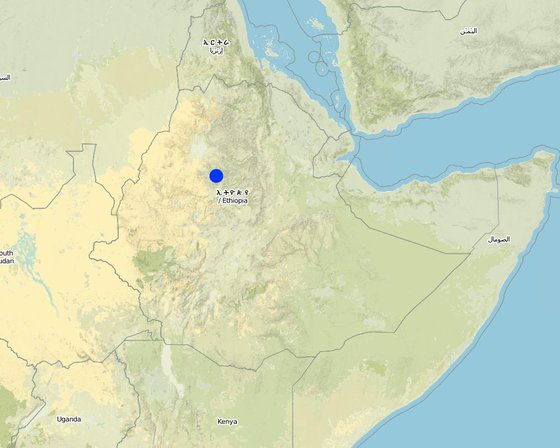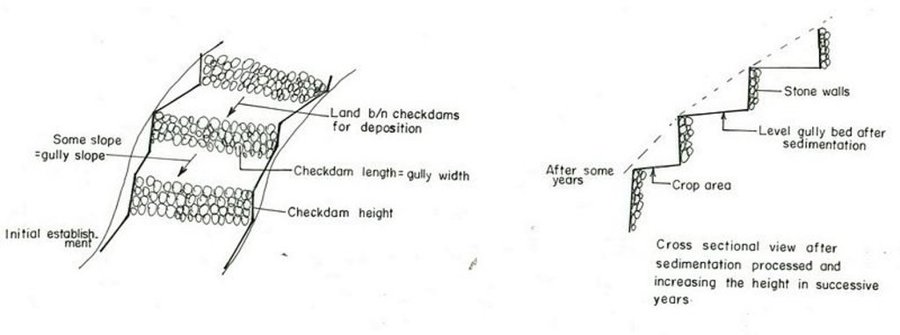

The technology is known by the farmers for more than a century. Since the area is highly affected by gully erosion, this practice is widely used by farmers in the area and also widely practiced. Its construction starts from the bottom of the gully and proceeds upslope with different dimensions. The height depends on the depth of the gully and it is increased from year to year. On the average the width is 1m and hieght is 1.80m. The technology is used to develop big gullies and treatment of small gully like depressions, attain slope change to enhance land suitability to crop production and to conserve soil and water. The construction of the stone checkdam starts with small heights and some height is added every year until the intended height is reached. The increase in height could be done during maintenance also. The major objective being to stop gully growth, trap sediment and retain water running down the gully. In the course of increasing the height, the area for sediment deposition gets wider. The technology is suitable to areas with low rainfalls of rugged topography having a network of gullies.

Location: Koshem Watershed, Amhara Regional State, Ethiopia
No. of Technology sites analysed:
Spread of the Technology: evenly spread over an area (approx. 10-100 km2)
In a permanently protected area?:
Date of implementation: more than 50 years ago (traditional)
Type of introduction









| Specify input | Unit | Quantity | Costs per Unit (Birr) | Total costs per input (Birr) | % of costs borne by land users |
| Labour | |||||
| Labour | ha | 1.0 | 4625.0 | 4625.0 | 90.0 |
| Equipment | |||||
| Tools | ha | 1.0 | 120.0 | 120.0 | 95.0 |
| Construction material | |||||
| Stone | ha | 1.0 | 100.0 | ||
| Total costs for establishment of the Technology | 4'745.0 | ||||
| Total costs for establishment of the Technology in USD | 551.74 | ||||
| Specify input | Unit | Quantity | Costs per Unit (Birr) | Total costs per input (Birr) | % of costs borne by land users |
| Labour | |||||
| Labour | ha | 1.0 | 624.0 | 624.0 | 100.0 |
| Equipment | |||||
| Tools | ha | 1.0 | 30.0 | 30.0 | 100.0 |
| Construction material | |||||
| Stone | ha | 1.0 | 100.0 | ||
| Total costs for maintenance of the Technology | 654.0 | ||||
| Total costs for maintenance of the Technology in USD | 76.05 | ||||
The cost benefit anlysis for sorghum shows negative profit but for other crops such as combination of coffe, papaya, chat the profit is high
for cropping patterns which consider field crops + cash crops is high
Quantity before SLM: 70
Quantity after SLM: 5
soil depth increased by depostion infiltration enhanced
plantations
Quantity before SLM: 10
Quantity after SLM: 0
checdams decrease gully slope
Fertile top soil erdoed upslope is trapped in the gully
combined application of useful plants and crop
high percolation rate of rain water
runoff is trapped by supportive technologies undertaken in the upper catchment and runoof velocity retarded by checkdams
sediment trapped in the gullies